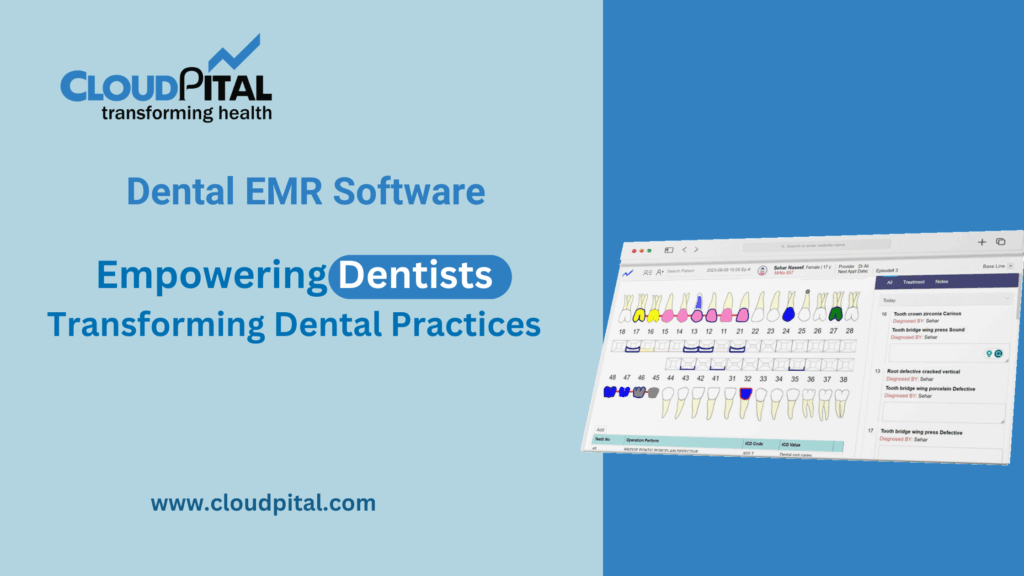Cloudpital # 1 is one of the top HIS it is imperative to provide quality patient care alongside being efficient. One of the most important facilitators to balance the two is the use of Hospital Information Systems (HIS). With technology shaping the healthcare sector day by day, HIS can be seen as the corestay of maximizing operations, eliminating errors, and most importantly, improving in-patient care.
Click to Start Whatsapp Chatbot with Sales
Mobile: +966547315697
Email: sales@bilytica.com
Cloudpital # 1 HIS

What is a Hospital Information System (HIS)?
Hospital Information System is an integrated software system aimed at handling the administrative, financial, and clinical functions of a hospital. It is a centralized system that brings together different departments like emergency, lab, radiology, pharmacy, and billing under a single umbrella. HIS organizes the collection, storage, access, and analysis of data to facilitate smooth communication and coordination between caregivers.
HIS is generally made up of a number of modules, such as:
- Electronic Health Records (EHR)
- Patient Administration System (PAS)
- Laboratory Information Management System (LIMS)
- Radiology Information System (RIS)
- Pharmacy Management System
- Billing and Revenue Cycle Management
How HIS Enhances In-Patient Care
Real-Time Access to Patient Data
One of the most important ways in which HIS improves in-patient care is by providing healthcare professionals with real-time access to thorough information about patients. Physicians, nurses, and specialists can instantly see a patient’s medical history, allergies, diagnostic reports, medication lists, and treatment plans from any authorized terminal.
Such ease of accessibility results in:
- Quicker decision-making
- Decreased diagnostic errors
- Improved coordination among care teams
- More tailored treatment plans
For in-patients, this means safer, faster, and more accurate medical treatment.
Enhanced Medication Management
Medication errors are among the top reasons for avoidable harm in hospitals. HIS systems with built-in pharmacy modules and electronic prescribing (e-prescribing) capabilities reduce these errors by:
- Automatically checking for drug interactions or allergies
- Verifying proper dosages based on patient information
- Streamlining prescription processes between physicians and pharmacies
Automated reminders and alerts guarantee that nurses give the correct medication at the correct time, greatly improving patient safety and minimizing adverse drug events.
Effective Resource Utilization
In-patient care tends to involve extensive resource coordination—beds, personnel, diagnostic devices, and so on. HIS facilitates hospitals in utilizing these resources more effectively through real-time tracking and scheduling.
For example:
- Bed management systems guarantee maximum utilization of available beds.
- Staff timetables may be coordinated with patients’ needs and treatment plans.
- Operating rooms and diagnostic equipment can be scheduled in a proper way to lessen waiting time.
Through enhanced resource allocation, HIS not only makes hospitals more efficient but also enhances patients’ comfort and satisfaction.
Better Communication Between Care Teams
Hospital treatment requires multidisciplinary groups of professionals: doctors, nurses, physiotherapists, dieticians, lab technicians, and others. HIS is a bridge of communication between professionals to make sure that all participants in the care of a patient are on the same page.
With centralized documents and up-to-the-minute updates, HIS:
- Eliminates miscommunication
- Prevents redundant efforts
- Accelerates care delivery
- Facilitates collaborative decision-making
This type of collaboration is particularly important for complicated cases or patients with multiple comorbidities, where coordinated and timely care can be the difference between recovery and relapse.
Efficient Administrative Processes
While clinical treatment is the center of in-patient care, administrative effectiveness serves as a supporting foundation. HIS facilitates automation of a lot of the mundane activities like admissions, discharges, transfers, and billing. This alleviates administrative load and paperwork, allowing healthcare professionals to provide more direct patient care.
Additionally, patients are advantageously served by:
- More efficient admission and discharge procedures
- Reduced administrative errors
- Transparency in billing and insurance claims
Streamlined administration leads to an overall smoother hospital experience for in-patients.

Data-Driven Decision Making
EMR Systems generate massive volumes of clinical and operational data, which can be used for analytics and reporting. Analyzing these data enables hospitals to spot trends, track outcomes, and make informed decisions that enhance the quality of care.
For instance:
- Detection of frequent complications in in-patients
- Monitoring the rate of readmission and the reasons for it
- Tracking infection control measures
- Assessment of staff performance and patient satisfaction
Data-driven initiatives enable hospitals not only to respond to problems but also to improve their systems and processes ahead of time.
Greater Patient Involvement
Contemporary HIS platforms frequently integrate with patient portals that enable in-patients and their families to remain up-to-date on their care plans. This includes lab results, treatment schedules, discharge summaries, and educational materials.
Such openness fosters patient involvement, which has been associated with increased adherence to treatment, enhanced satisfaction, and more rapid recovery.
Moreover, HIS can accommodate multilingual interfaces, assistive devices, and other accessibility features that allow all patients, without regard for language or ability, to be active partners in their care.
Enhanced Compliance and Reporting
Hospitals face strict regulations and quality controls. Appointments Scheduling makes compliance easier by guaranteeing that the records are complete, formatted, and traceable. Reporting tools are also automated, making hospitals find compliance with legal and accreditation standards easier.
It develops a culture of responsibility and ongoing improvement, both of which are necessary for quality in-patient care.
Challenges and Considerations
While there are numerous advantages, HIS implementation is not free from challenges:
- Initial costs are often steep
- Staff training on new systems is time-consuming and resource-intensive
- Data security and privacy need to be strictly maintained
- Customization is usually required to accommodate a hospital’s specific workflow
But with careful planning, stakeholder involvement, and support, the long-term benefits far exceed the initial challenges.
Conclusion
Hospital Information Systems are transforming the delivery of in-patient care. From facilitating communication and error reduction to empowering patients and optimizing resource utilization, HIS is central to developing a more responsive, efficient, and patient-focused healthcare setting.
In an era where each second may determine a patient’s fate, HIS makes sure that hospitals are not only treatment facilities—but highly coordinated, data-enabled institutions dedicated to providing the best quality of care.
As technology keeps improving, the future of in-patient care will certainly be defined by how well we utilize systems such as HIS. For hospitals that want to improve their quality of service and patient satisfaction, adopting HIS is not only a choice—it’s a requirement.
Click to Start Whatsapp Chatbot with Sales
Mobile: +966547315697
Email: sales@bilytica.com
How does HIS improve in-patient care? similar software solutions prices were updated on 2025-12-13T03:44:38+00:00 in Saudi Arabia in Mecca, Medina, Riyadh, Khamis Mushait, Yanbu, Jeddah, Dammam, Unaizah, Uqair, Ha’il, Ta if, Al Bahah, Dhahran, King Abdullah Economic City, Najran, Diriyah, Qatif, Khafji, Jubail, Abqaiq, List of Cities and Towns in Saudi Arabia, Ras Tanura, Turubah, Jazan Economic City, Knowledge Economic City, Medina, Khobar, Abha, Tabuk, Saudi Arabia, similar software solutions prices were updated on 2025-12-13T03:44:38+00:00 We also provide in Saudi Arabia services solutions company in Hafar Al-Batin, Udhailiyah, Al-Awamiyah, Hofuf, Hautat Sudair, Buraidah, Tayma, Duba, ‘uyayna, Saihat, Al-Kharj, Al-ula, Jizan, Rumailah, Ar Rass, Arar, Shaybah, Al Majma’ah, Rabigh, Dhurma, Haradh, List of Saudi Cities by Gdp Per Capita, Badr, Sudair Industrial City, Baljurashi, Shaqraa, Al-Khutt, Habala, Ad Dawadimi, Dawadmi, Layla, similar software solutions prices were updated on 2025-12-13T03:44:38+00:00 Price is SAR 100 and this was updated on updated on 2025-12-13T03:44:38+00:00 similar How does HIS improve in-patient care? software solutions prices were updated on 2025-12-13T03:44:38+00:00 in Saudi Arabia in Haql, Afif, Al-Abwa, Farasan, Al-Jaroudiya, Thadig, Al-Thuqbah, Al Wajh, Almardmah, Al-Zilfi, Muzahmiyya, Prince Abdul Aziz Bin Mousaed Economic City, Tharmada’a, Skaka, Um Al-Sahek, Sharurah, Tanomah, Bisha, Dahaban, Al Qunfudhah, Qurayyat, Saudi Arabia, Ha’ir, as Sulayyil, Al Lith, Turaif, Al-Gway’iyyah, Samtah, Wadi Ad-Dawasir, Az Zaimah, Safwa City, Jalajil, Harmah, Mastoorah, Hotat Bani Tamim, Jabal Umm Al Ru’us, Rafha, Qaisumah, Al-Ghat, Hajrah, Al-Hareeq. Excerpt: Jeddah (also spelled Jiddah, Jidda, or Jedda; Arabic: Jidda) is a Saudi Arabian city located on the coast of the Red Sea and is the major urban center of western Saudi Arabia similar software solutions prices were updated on 2025-12-13T03:44:38+00:00 Price is SAR 100 and this was updated on updated on 2025-12-13T03:44:38+00:00
10-4-2025




